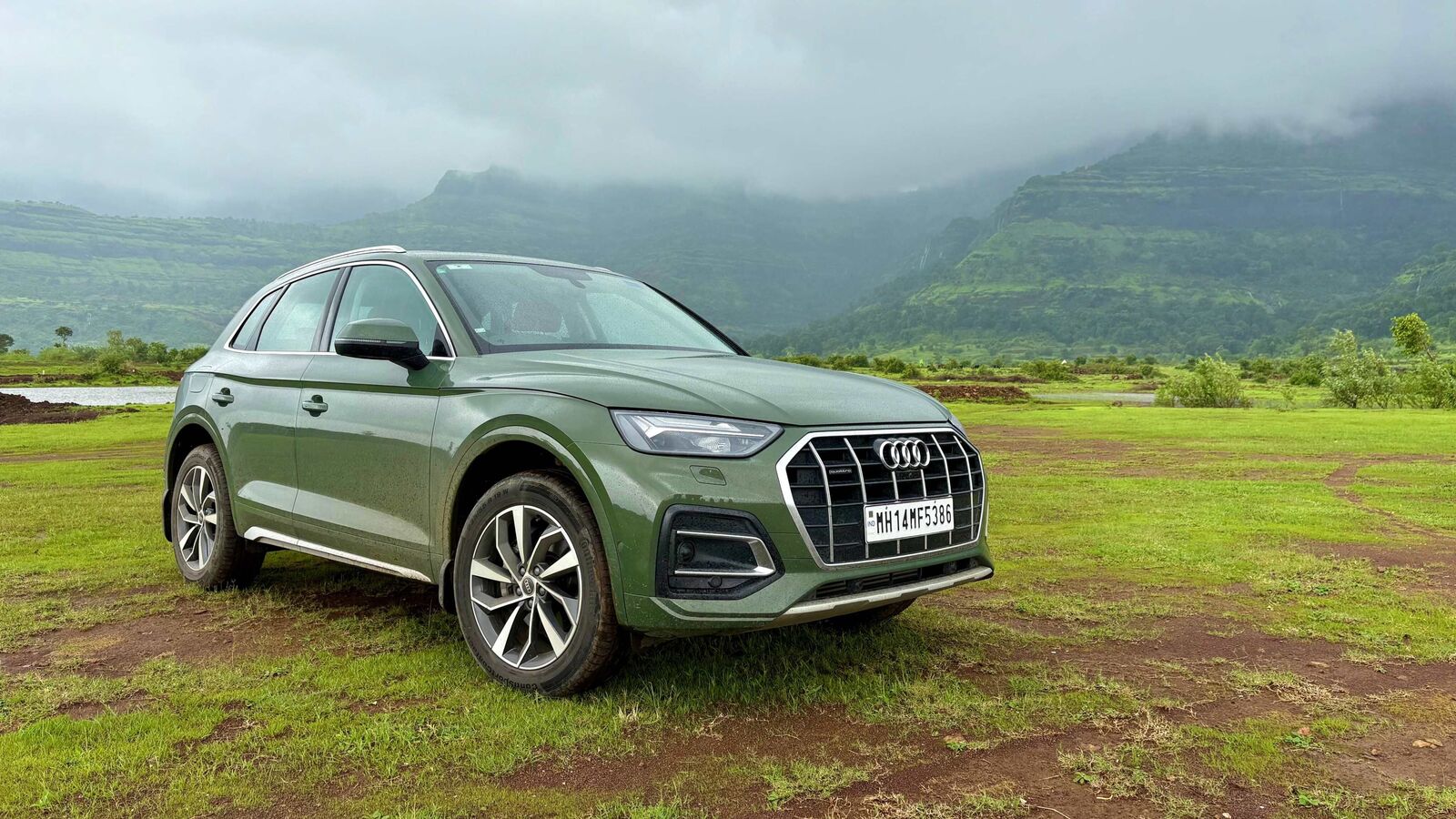
Overview
IF KIA’S aim in building the Tasman was to get tongues wagging, then it has certainly succeeded. If, however, its aim was to sell a lot of utes, then perhaps the mission has failed.
Even before the model arrived (a process that took an inordinate amount of time from our perspective) the Tasman was tipped to sell 15,000 units a year. Early figures reveal that figure is likely to be closer to 10,000 – well short of stalwart sales leaders like the Ford Ranger and Isuzu D-Max… and even the decade-old Toyota HiLux.
But neither of those points reflect the reality of the Tasman’s standing. Make no mistake about it, this is a cracking good ute. Even if it is as ugly as the proverbial hat full.
The 24-variant Kia Tasman range is available from $42,990 in two-wheel drive guise and topping-out at $74,990 for the four-wheel drive X-Pro range-topper tested here.
Powered by a turbocharged 2.2-litre four-cylinder diesel engine producing 154kW/440Nm and paired with an eight-speed automatic transmission, the X-Pro variant features a dual-range, part-time four-wheel drive system with included Auto mode and a locking rear differential.
Fuel consumption is listed at 8.1 litres per 100km on the ADR combined cycle while the fuel tank holds 80 litres.
On the all-important four-wheel drive front, we find an approach angle of 32.2 degrees, a ramp-over angle of 25.8 degrees, and a departure angle of 26.2 degrees. Ground clearance is listed at 252mm and water fording 800mm (the air intake sits 950mm from the ground).
Suspension is independent at the front with double wishbones and coil springs, while the rear is a traditional leaf arrangement. Braking is all disc, unlike some segment rivals that continue to offer a disc/drum combination.
Built on a ladder-frame chassis, the Tasman range offers a payload rating exceeding 1000kg, a gross vehicle mass (GVM) figure of 3250kg, and gross combination mass (GCM) 6200kg.
Braked towing capacity is listed at 3500kg as per most in the segment, and all Tasman variants are equipped as standard with an integrated trailer brake controller.
The dual-cab variant on test offers a generous load bed measuring 1512mm in length, 1572mm in width, and 540mm in height, with Kia quoting a VDA capacity of 1173 litres. An additional 45 litres of storage is offered under the rear seats, which also feature slide and recline functions.
Up front, the Tasman X-Pro features a useful folding console table and dual wireless smartphone charging pads. They are joined by dual 12.3-inch instrumentation and infotainment screens, and a separate 5.0-inch screen for climate control functions.
Connectivity highlights include wireless Apple CarPlay and Android Auto smartphone mirroring, and Kia Connect remote control functions. Over-the-air software updates are also part of the deal.
Equipment highlights include 17-inch alloy wheels with all-terrain tyres, ground view monitor (as part of the 360-degree camera system), harman/kardon premium audio, fuel tank protection plate, a heated steering wheel, heated second-row seats (outboard), artificial leather upholstery, full LED ambient cabin lighting, a powered front passenger seat, sunroof, and off-road pages with steering direction, oil levels, and more.
The Kia Tasman is offered in eight exterior colours across the line-up – Clear White, Steel Grey, Interstellar Grey, Aurora Black, Runway Red, Cityscape Green, Tan Beige, and Denim Blue – with the option of body coloured fender flares adding to the total number of Tasman variants of offer.
The Tasman range features the safety and driver assistance technologies required to achieve a five-star ANCAP rating – though many are annoyingly interventionist, forcing deactivation with each ignition cycle.
Kia backs the Tasman with a seven-year/unlimited-kilometre factory warranty with included capped-price servicing and up to eight years of roadside assistance.
Service intervals are pegged at 12 months/15,000km (whichever comes first) with three-, five-, and seven-year prepaid service packages available from $1371, $2834, and $3929 respectively.
Driving Impressions
One of the most common remarks we hear from dual-cab buyers surrounds the adequacy of the Tasman’s 2.2-litre engine.
With 154kW/440Nm it offers 3kW/10Nm more than the revered Toyota LandCruiser 70 Series’ V8, all of which is channelled to the wheels via a far more intelligent eight-speed transmission.
Simply, it’s a unit that does what’s required of it. The spread of gear ratios assists in keeping the R-Series ‘four’ in its sweet spot, delivering performance that is comparable with Isuzu and Mazda’s new 2.2-litre, the Toyota’s 2.8-litre, and Ford’s 2.0-litre units.
It’s also impressively quiet and adheres closely to the manufacturer’s fuel consumption numbers. Win!
Sure, it’s not a match for the V6 diesel found in the Ranger and Amarok, but it doesn’t claim to be. If towing at capacity is important, then the Tasman mightn’t be the ideal choice. But, for most applications, the 2.2-litre engine is more than sufficient.
Driveability is excellent with smooth power delivery across the rev range, minimal step-off lag, and capable overtaking. While we didn’t tow with the Tasman this time around, we feel it would handle two-and-a-half tonnes without much drama – though we’ll reserve our judgement on that for now.
Kia’s locally tuned suspension program shines brightly in the Tasman. The vehicle is planted and impressively supple, maintaining its composure when all shook up. It’s a dual-cab that delivers a far better ride/handling compromise than every competitor in its class bar the Ford Ranger – and even then, it’s a very close call.
The position sensitive dampers help to quell unexpected inputs and assist in maintaining a level footing in hard cornering. While the Tasman isn’t an SUV, its dynamic qualities aren’t far off, which comes as a pleasant surprise to a writer with a Toyota HiLux in the garage…
We found the steering well assisted and appropriately geared, the braking action smooth, and the traction and stability control systems hard to fault. Unladen and in wet weather, the Tasman remains planted with little of the rear-end skip typically found in dual-cab utes.
In short, the Tasman is very well sorted in terms of its dynamics.
Couple that with a cabin that offers the amenity and roominess other utes simply can’t match, an exceptional view of the road ahead, and a level of quietness that impresses whether on or off the sealed stuff and it’s pretty easy to see where our opinion is headed… well, almost.
You see, for all its positives, the Tasman is let down by headlighting that is entirely unacceptable for Australian conditions. Even on high beam, the headlights lack the reach and spread required to travel safely at the speed limit, especially on roads where Skippy could be readying a kamikaze dash at any given moment.
We also found a couple of quality niggles inside the cab, with some trim feeling thin and flimsy, and others already showing signs of wear and tear (though this is perhaps understandable given the thrashing a previous road tester gave this car before us).
Those points aside, our view remains favourable.
Sure, it’s a clumsily styled ute with a face like a busted rissole, but it also offers a lot that others fail to match. On balance, we would urge buyers keen to own a ute that ‘does it all’ to give the Tasman a go.
If it’s changed my mind, it might do the same for you.



